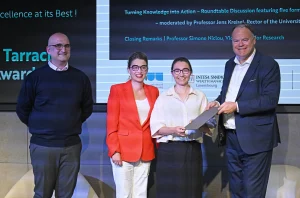Ein Studium an der Universität Luxemburg ist eine eizigartig bereichernde Erfahrung. Die Studiengänge vermitteln hochaktuelles Wissen in einem äußerst internationalen, mehrsprachigen und interdisziplinären Umfeld. Kleine Klassen sorgen für eine direkte Interaktion zwischen Studierenden und Lehrkräften.
Anträge auf Zulassung zu den Studiengängen für das Studienjahr 2025-2026 können ab dem 1. Februar 2025 eingereicht werden. Der Zulassungsantrag für das akademische Jahr 2025/2026 ist jetzt für Nicht-EU-Bewerber geschlossen. EU-Bewerber können sich noch für ausgewählte Studiengänge bewerben.











